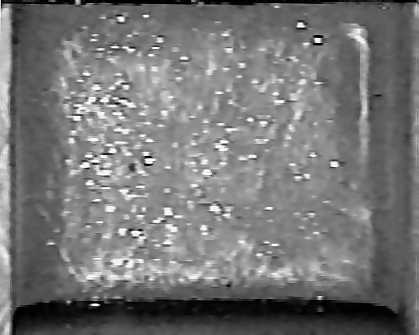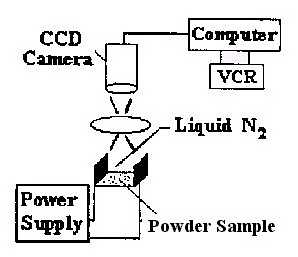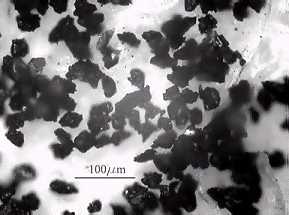Superconductivity-Dependent Friction

An Electrostatic Separation Technique
for Superconductors
"Non-superconducting particles were in the middle of the cell while the BSCCO
particles were on the electrodes. A test showed they were almost pure."
- Rongjia Tao, Dept. of Physics,
Temple University
25 June, 2005
by E. Joe Eck
Superconductors.ORG
An unexpected 1999 discovery by SIUC
physicists has led one of the original researchers to a method of isolating superconductors from non-superconducting
materials. Dr. Rongjia Tao, along with colleagues X. Xu and Deepika Chhabria of Temple University, report that a strong DC
electrostatic field, which was found in 1999 to cause superconducting particles to ball up and fly
about, can be used to filter these same particles.
Dr. Tao says superconducting particles will fly to opposing electrodes in a capacitor-like "cell".
While non-superconducting particles remain in motion - bouncing between the two high-voltage electrodes.

In a test mix of BSCCO and non-superconducting antimony (shown above), BSCCO grains
can be seen clinging to the cell electrodes, while Sb grains dart back and forth in the liquid nitrogen.
Dr. Tao reports the Meissner effect - strong diamagnetism that is characteristic
of all superconductors - was found to be ineffective as a filtering tool. "The Meissner effect is usually
too weak to push these particles out from a mixture of normal particles," Tao said. But the electrostatic method
"was very effective. A test showed that the particles collected from the electrodes were all superconducting."

In the new electrostatic separation technique, a vertical capacitor cell with dimensions
18mm X 15mm X 15mm was fashioned from a U-shaped teflon spacer. 2 brass plates were attached to the open sides of the spacer
to create a cavity and provide electrodes for the capacitor. The cavity was filled with liquid nitrogen
and particles of roughly 25-38um size were placed in the pool. High voltage (1100 dcv/mm) was applied
to the two metal electrodes for at least two minutes. The electric field was then reduced (to 333 dcv/mm) for one minute.
After collecting the respective particles, they were found to be essentially pure BSCCO and pure Sb.


The above photos show the BSCCO-Sb mix on the left and the
extracted pure BSCCO on the right.
Tao reports his technique will work to separate superconductors
from metallic as well as non-metallic materials. Thus, researchers will now have a new tool to help advance
superconductor research by isolating unexpected minority phase superconductors
from a soup of various materials. A Temple University patent is pending.
© 2005 Superconductors.ORG
All Rights Reserved
 BACK to the "News" page at Superconductors.ORG
BACK to the "News" page at Superconductors.ORG






 BACK to the "News" page at Superconductors.ORG
BACK to the "News" page at Superconductors.ORG